The first pancake is always a throw away, right? Why should control panels be any different? They aren’t. That’s why I ordered extra face panels. 🙂
Actually, it went very well with only a few surprises. I learned 3mm LEDs don’t fit in a 3mm hole yet 5mm LEDs do fit in 5mm holes. BTW, 1/8″ is the right size hole for a 3mm LED. I learned it is nearly impossible to feed 28 leads (14 LEDs) simultaneously through 1mm holes in the back panel with only an inch clearance between it and the front panel. Fixed that problem with 2mm holes and pre-soldered wires on the LEDs. I learned that, while specified in the tech data sheet, a 7mm (0.2755″) panel hole is a very tight fit for the threaded barrel of the push button switches. 9/32″ (0.28125″) works better. Other than these few on-the-fly changes, the first panel construction went pretty much to plan.
I’ll do a soup-to-nuts construction post when I make the first production panel, but for now here are some highlights from the first pancake.
Twenty polycarbonate panels cut to size received from TAP Plastics:
An inventory of FRP back panels cut from the wash tub surround leftover:
Printing the art:
Black plastic panel cut from Evergreen #9114 stock: For some reason I took a picture of the trim instead of the black panel itself.
Scotch tape holding together the panel “sandwich” (minus art) with locator print on top ready for pilot hole drilling:
Plastic drills with their special tip angle and flute grind make absolutely gorgeous holes in polycarbonate:
I was having fun drilling all the holes in each panel and forgot to take pictures. More to come.
Trying various methods to determine which delivers the cleanest hole in the photo print art – drill bit, plastic drill bit, hand punch, leather punch:
Plain ole K&S Brass tubing in the drill press makes the cleanest near perfect hole in photo paper:
Chunk of Formica counter top with a router screwed to the underside i.e. poor man’s router table for cutting grooves in the oak frame stock:
¼” face panel groove 3/16″ deep in all the stock and then a little extra notching on the bottom frame section:
With a few test components installed:
You get this: (excuse the dust and light glare. nice pics to come.)
Now that I have a defined proven process it is time to mass produce. The next post will be a meaty one. Stay tuned.
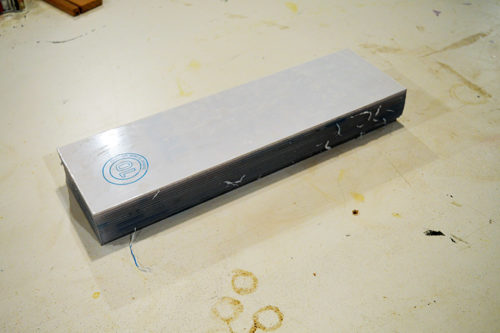
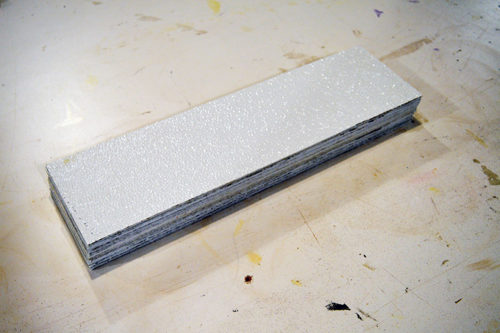
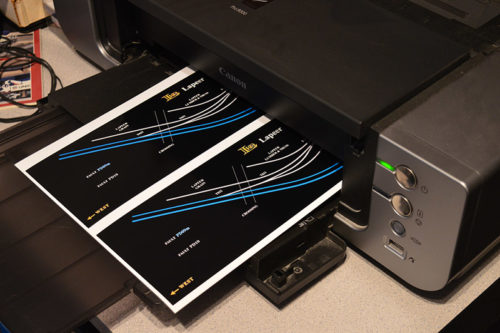
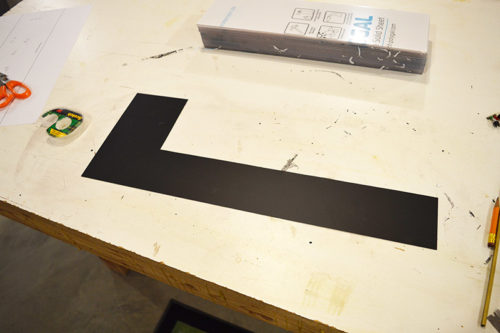

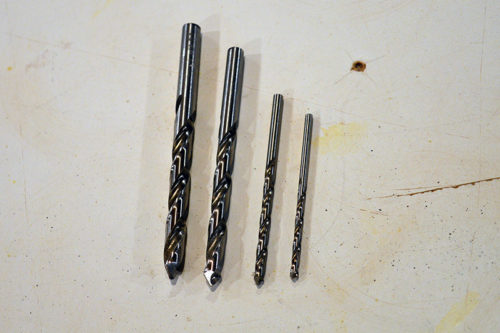
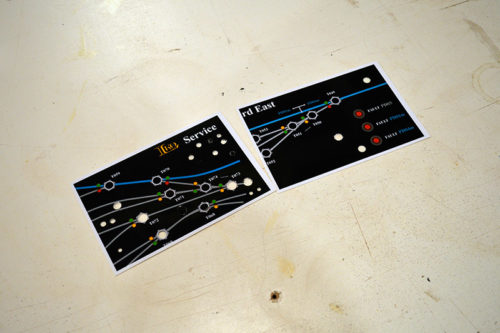
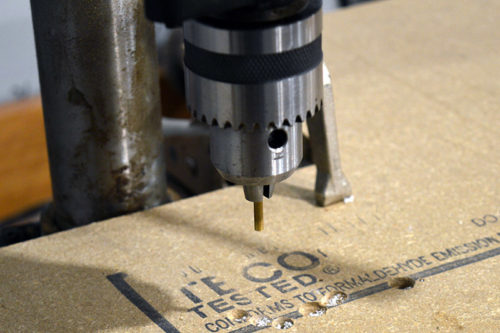
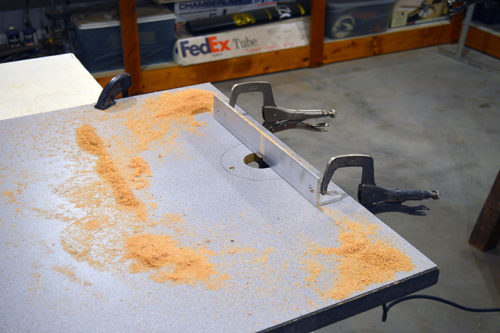
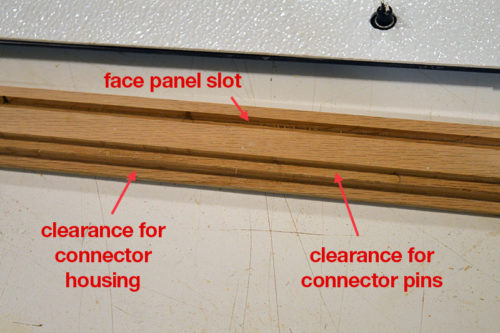
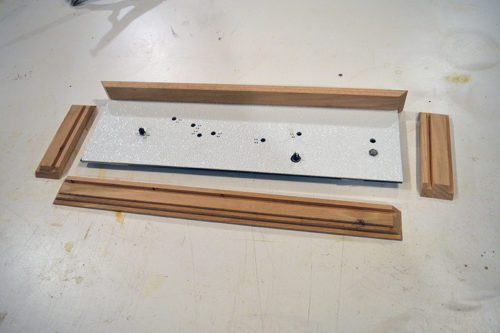
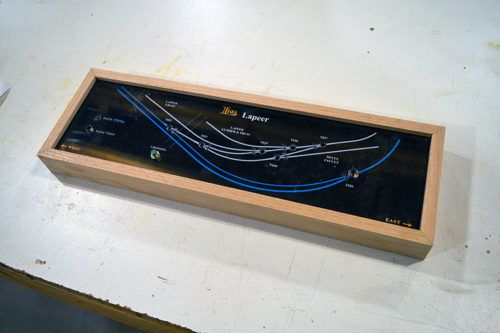

Howdy Alan
I was looking at your building risers since I decided to redo my layout and found a few treasures I could use. Many other items was interesting too. I really appreciate your website even tho I have been into model trains for a long time but there is something to pick up for me and most likely others too.
Cheers, the old fardt in Ory-Gun
Alan – just curious: what’s your opinion of the TAP custom panels…was it worth what it cost? I know it was worth it labor-wise (nearly impossible to DIY with any consistency…) but, was it worth it for the final product?
In a word, yes. The TAP panels are exactly the correct size. The edges are clean and square. No chips or marred edges whatsoever. I’d say they are as perfectly cut as is possible. I could never have done so well myself. Very satisfied.
As always, you are setting the standard.
Hi Alan,
I just found your blog and I must say, amazing work. Those panels are just awesome. My question is about the art work. What program did you use and what did you print the art work on? The black background on the art work, was that all printed with black ink? Could you please go in some detail about the art work and the printing?
Thanks
Hi Lloyd,
Thank you for the compliment.
Yes, the black is all black ink. Amazingly, only used 2 black ink cartridges during all the printing.
The track plan was originally created in XTrkCAD. I exported it in SVG format so it could be imported into Adobe Illustrator where I then sliced it into the pieces I needed for each panel, styled the lines (thickness, color, etc.), and placed the controls drill markings. When finished I printed each on 13″x19″ Canon Low Luster Photo paper using a Canon Pro9000 ink jet printer.
The combination of vector graphics and photo quality printing resulted in razor sharp graphics. I am quite pleased with the results.
If you have Adobe Illustrator I would be happy to send you one of the design files so you can see first hand how the artwork is done.